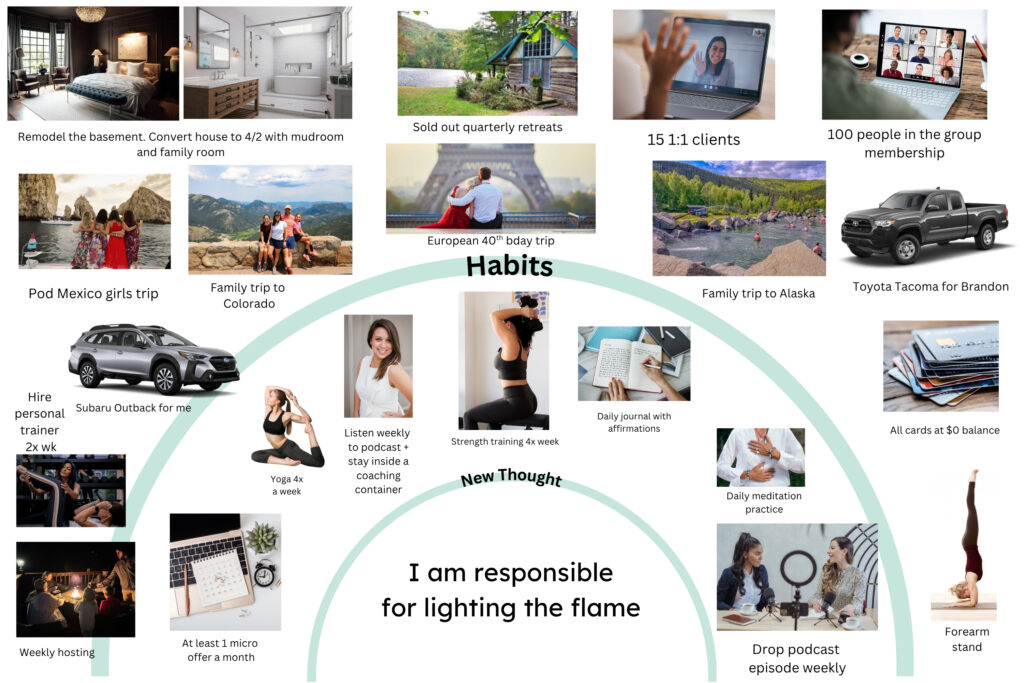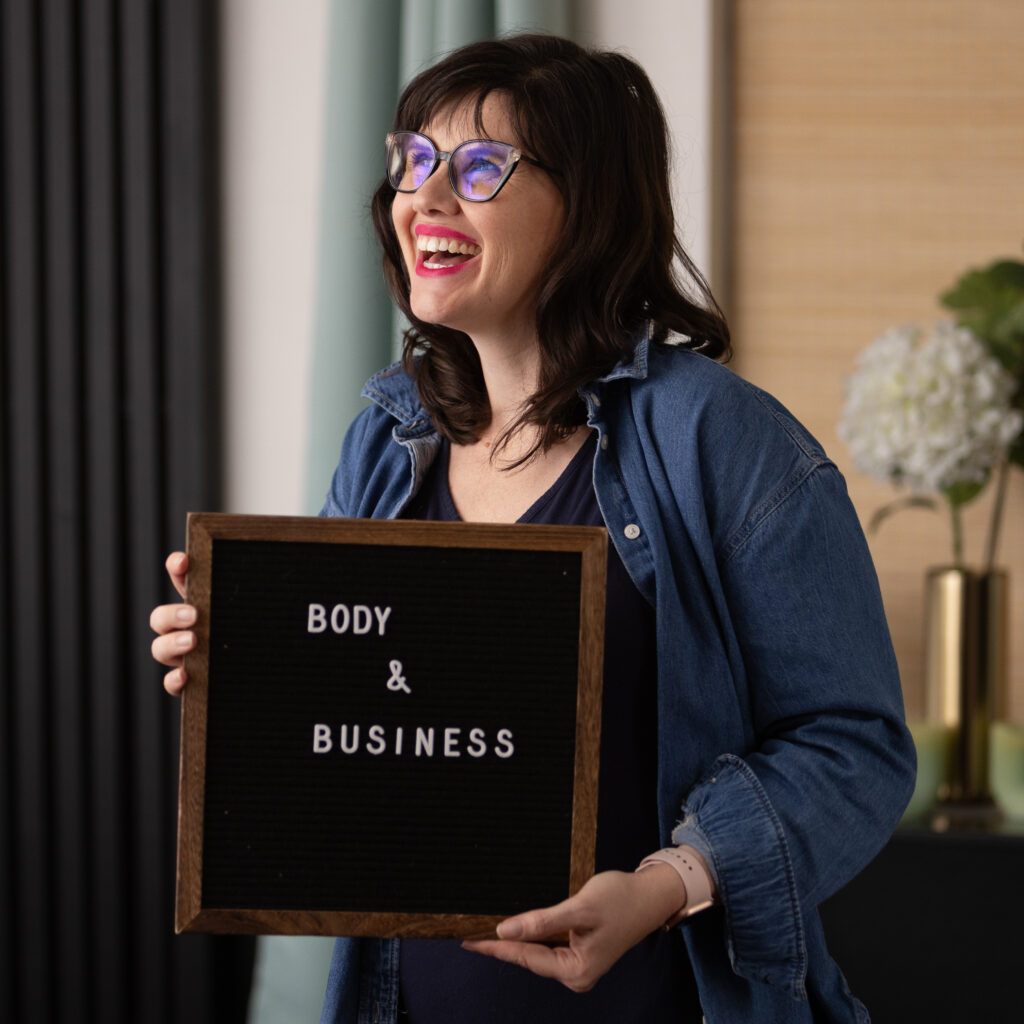Chapter 1
From Unleash Your Favorite Self by Sophia Hyde
I have had several crashes in my life, many of which find their way into the subsequent chapters of this book.
Each time I hit another bottom, it felt like I was suffocating.
I felt that way when I ran my body into the ground participating in hustle culture—the term used to make workaholism sound cool and trendy.
I felt that way when I was twenty-seven, moving back into my childhood bedroom with my husband. Our first child was on the way, and we couldn’t support ourselves.
I felt that way when I swiped a WIC card for groceries. I thought people who graduated high school with a 6.2 GPA and went to college on a full-ride scholarship were exempt from poverty.
I felt that way when I spent fifteen years trying to lose the same thirty pounds.
I felt that way when I was so miserable as a brand-new mother that my body shut down and physically stopped working.
I felt that way when I was four years into building a business, couldn’t make enough to support our family, and simultaneously realized I didn’t want to own it anymore. What kind of person quits when they are finally on the verge of success?
I felt that way when I lost friendship after friendship. I mean…I didn’t really lose any friends. I just realized, time and time again, that what I thought friendship looked like and what I was experiencing weren’t the same things.
I felt that way when I could no longer participate in church after a decade of living with its value systems closely tied to my identity.
I felt that way when I didn’t know how to “be” in my own family.
I felt that way when I was filled with hopelessness about the world’s problems and my inability to do anything about them.
I felt that way when I suffered in silence.
It was during these pains that I realized what I wanted to be when I grew up…a life coach. Cue the laughter from the audience. There was one teeny, tiny, little problem with this epiphany. My life was a hot mess. I knew I had to solve all these challenges before I could teach others with integrity. I’d spent a decade living in the gap between where my life was and where I craved it to be. I knew what I wanted. I just had no idea how to create it.
Over that decade, I found helpful tools. Slowly but surely, I climbed out of my holes. I paved my own path through a relentlessness, slow burn.
I was born stubborn. I used to think it was a flaw, but now I realize “stubborn” is just a synonym for my tenacity, grit, and intensity. I was determined to find a way to bust out of the boxes I felt trapped inside. The very qualities that made me “too much” for some people were the same qualities that empowered me to keep going.
At the heart of each of them were these core feelings:
- Something isn’t right.
- Life is not supposed to be like this.
- I must be doing something wrong.
- I thought I was smarter than this.
- Why are these things (which are easy for others) so incredibly challenging for me?
- Why am I staying stuck?
- I just want to bang my head against the wall. None of this makes sense to me.
Eventually, I figured out how to run a business, mother in a sustainable way, pay off $150,000 of unsecured debt, restore my mental health, build healthy family relationships, find deep spiritual peace, connect with and discover a sustainable healthy relationship with my body, build a stronger marriage, create the friendships I had always craved, make a difference in my community, and simply create a life I enjoyed living.
Life is still very, very messy. The difference between then and now is that I have learned how to hold beauty in one hand and pain in the other.
I reached a point where I felt an overwhelming peace in my life. Once I discovered that I had enough to offer value to others, I decided to enroll in coach training.
A couple of years into my coaching practice, I kept running into the same problem in my conversations. The concepts I wanted to bring together were scattered, either in dozens of different places, or nowhere I could find.
Despite being an avid reader, I resisted envisioning myself as an author. That was for the fancy people with PhDs who were smarter than me and more qualified. I was just a student of the world. Why in the world would I author a book when we are all saturated with so many amazing ones already?
As my frustrations with not having the resources I needed for my clients grew, I finally accepted the reality that I would have to create it myself. I decided to write the book that I craved to recommend.
My frustrations came from gaps in the materials I was consuming. For example, how can you write about having a healthier mind but not address the mental load of motherhood? Most of my female clients are drowning in a sea of tasks. They are exhausted trying to carry the needs of everyone around them while striving to be the glue holding together their families.
What about the crisis facing millions of individuals relating to the lack of a religious home? What effect does that have on someone? How do you find spirituality without religion? How does all of this connect to the marketing companies stealing the term “self-care” and turning it into a sales opportunity for pampering products? Both my male and my female clients were regularly giving from a place of exhaustion and needed new tools. I needed a book that could connect all the dots.
Another one of my frustrations was the phrase “limiting beliefs.” It’s common coaching jargon describing the concept that we all have beliefs which shape our understanding of the world. However, these beliefs are too often untrue. These beliefs, which are rooted in thoughts, are often subconscious. They significantly shape how we move in the world. We place limitations and glass ceilings on ourselves through our thoughts. Early in my growth journey, I figured out that my thoughts were self-sabotaging. But as a coach once told me, “A picture cannot see its own frame.”
Coaches often talk about limiting beliefs, usually as something they can help others identify, but how the hell was I supposed to identify them in myself and reframe them? I couldn’t find a method that simplified the concept enough to help me identify my own “limiting beliefs” so I could rewrite them. This frustration motivated me to create my own tools, which I will share with you here.
When discussing personal growth and development, it’s common to talk about habits, health, and finances, but what about all this other stuff?
I knew I would never create the success I craved in my business, health, or finances until I addressed the whole picture.
And that, my friends, is why this book was born.
In it, I’m going to lead you through the task of tackling the entire picture of your life.
How do I know this will work? Because I experience it every single day on my coaching calls. Not only did I create a life I thoroughly love for myself, but I’ve watched my clients do the same for themselves.
My clients are diverse. All genders. They range from teenagers to people navigating retirement. Their financial situations range from a millionaire business owner to a bartender scraping together their monthly payment. They are each unique in race, culture, ethnicity, and religion. These same concepts and materials are working for every single one of them. We are all human. These struggles and triumphs are all part of the human experience. I stand firmly in my belief that we all have so much more in common than what separates us.
And do you want to know the craziest part? Their circumstances rarely changed. They didn’t need a new house, new job, new relationship, or million-dollar paycheck to have the life they love. When they come to me, I can see it clear as day. Everything they need is already inside of them. They are already worthy, capable, and qualified enough to attain their desires. They just need help to see it. The same applies to you.
You are already worthy.
You are already enough.
You are already capable.
You are already qualified.
You can attain the desires you have for your life. If you feel like you are suffocating in any area of your life, I hope these pages will help you set yourself free.
Let me make one thing crystal clear, however. The process never ends. It’s not possible to write a book about life from the perspective of having “arrived.” Half of the healing comes by accepting the reality that it’s always going to be 50% hard and 50% beautiful. A significant part of the journey is learning that the “slow burn” is the process. I no longer believe I will ever “arrive.”
I’ve often heard it said that there is no such thing as stagnant. You are either growing or you are dying. It’s usually been in a business setting where I have heard this analogy. You cannot just coast. If you are not actively growing your business, then your business is actively dying. There is no such thing as stagnation. This perspective comes from nature. Everything is always in motion. Nothing can ever just stay the same.
However, I see it differently.
We are always growing and dying.
Part of the growth process is being willing to release what is no longer working for us. The muscle of learning how to let go is a hard one to grow. It’s painful but necessary to prune. Our bodies are constantly shedding dead skin cells and creating new ones. Most trees go through a shedding in autumn, look dead in winter, and reveal their beauty in spring. So too should we be shedding the parts of our lives that are no longer healthy for us.
Naming my work “Unleash Your Favorite Self” is intentional. The release is always the first step. Shedding the layers of what is no longer serving you is a significant part of the process. Once you do, you will find a version of yourself more powerful, stronger, and better equipped than you ever imagined.
For most of my clients, the first round of purging is letting go of the expectations that don’t align with who they desire to become. I witness people defining their own life terms every day. The words “successful” or “best self” don’t sit well with me because they are filled with connotations.
When we hear “success,” whether we want to or not, most of us automatically think of financial wealth and material possessions. Without even realizing it, we have ingrained belief systems about being our “best self.” We often assume our best must include discipline, a body that’s a certain shape, crushing it at the top of our careers, and many other illusions.
Would you confidently say your “best self” spent their entire Sunday laid up on the couch with Netflix and pizza? But what if that’s what you find to be the most restorative, joyful activity for you? What language says, “I want to create a life where I can enjoy spending my Sundays on the couch guilt-free if I so desire?” But favorite self? No one can define it but you. The only implication of the word favorite is that you fully own it.
What I know as a fact is that deep inside each of us is a favorite self. A life we crave to live, but it may or may not look like what others seem to want. The only way we will find our peace is if we can remove all the burdens, stories, and expectations sitting on top of us to reveal what’s underneath.
My goal for the reader is that by the end of this book, you will have clarity over what you truly want, feel confident in who you are, and feel equipped to take the necessary steps to unleash your favorite self.
These concepts are not to be taken as advice from an expert who can spoon-feed you a perfect meal but rather as an invitation to read someone else’s cookbook. You may be inspired to sprinkle in new ingredients and techniques you have yet to try. If you don’t care for my recipes, try someone else’s cookbook.
I’ve learned that people are magnets. Sometimes we attract one another, and other times, our energy repels and pushes away. Sometimes, the connection is weak and will barely hold together. Other times, the connection is so strong it requires an intense force to separate the bond. I’m not going to be positively magnetic for every person, nor am I trying to be. However, every time I open the door to let others in, people gravitate to my story and experiences. Many thank me for saying what they needed to hear. Though, admittedly, some say it’s not for them.
On Instagram, I’ve had people tell me they’ve unfollowed my account because I use too many words, and it hurts their heads to read it all. They have also told me that the content I produce is uninteresting, and they give no energy to thinking about these things. Others have enthusiastically shared, “I’ve added you as a favorite, so I won’t ever miss a post or story you publish. I check every single day to see if you wrote anything new!” The positive impact on those individuals is what keeps me going.
This book is for you. You, who are hungry to hear what it means to be fully human, to be empowered, and to write your own stories. If you decide I don’t meet the standard of people you allow to speak into your life, then support authors who do.
Did you catch what I just did there? I just dropped a nugget many of you need.
You are a magnet. If you’re struggling with the pain of accepting that not everyone likes you, please stop. Immediately. I beg you. I spent years and years suffering as a people-pleaser. I desperately wanted to be liked by everyone, especially if it was someone I admired. When the sentiment wasn’t reciprocated, it was devastating.
Despite years of wishing this didn’t bother me and trying not to care, it took learning only one concept to flip the switch. In Ichiro Kishimi and Fumitake Koga’s book, Courage to Be Disliked, they wrote:
“If there are ten people, one will be someone who criticizes you no matter what you do. This person will come to dislike you, and you will learn to not like him either. Then, there will be two others who accept everything about you and whom you accept too, and you will become close friends with them. The remaining seven people will be neither of these types.”
The authors go on to challenge the readers to pay attention to where they give their attention. This simple paragraph completely rocked my world.
The numbers remain consistent whether you allow people to see the real you or let them see the you that’s desperately trying to fit in. Whichever version of you shows up in a room will end up with one hater, two admirers, and seven people who don’t care. You might as well just be who you truly want to be in this world. It’s a hell of a lot easier to find your 20%.
Understanding this concept served as a permission slip in my mind. I threw myself into finding my 20%. I started repeating this thought:
“Out of every ten people you meet, one will dislike you, two will love you, and the other seven won’t even care. Give all your energy to the two who love you.”
I started asking different questions:
- Where are these people?
- How do I find more of them?
- How can I weed out the 10% quicker so they don’t bring me down?
- Why am I sitting at a table with the 70%? Am I just a warm body to these people?
For the next twelve chapters, I will be inviting you into my world. If you find we are magnetic, I hope you reach out. If you’re in the eight out of ten, it’s highly likely you didn’t even pick up this book. But if you did, I hope you stay a while and can gain some value from the following pages.
My wish for all of us is to be liberated. I crave to live in a world where we all know our favorite selves, unleash them into the world, and find our two in ten.
Ready for More?
This is just the beginning. If Chapter One resonates with you, imagine what the full journey can do.
📖 Grab your copy of Unleash Your Favorite Self today and start discovering the life you crave.










